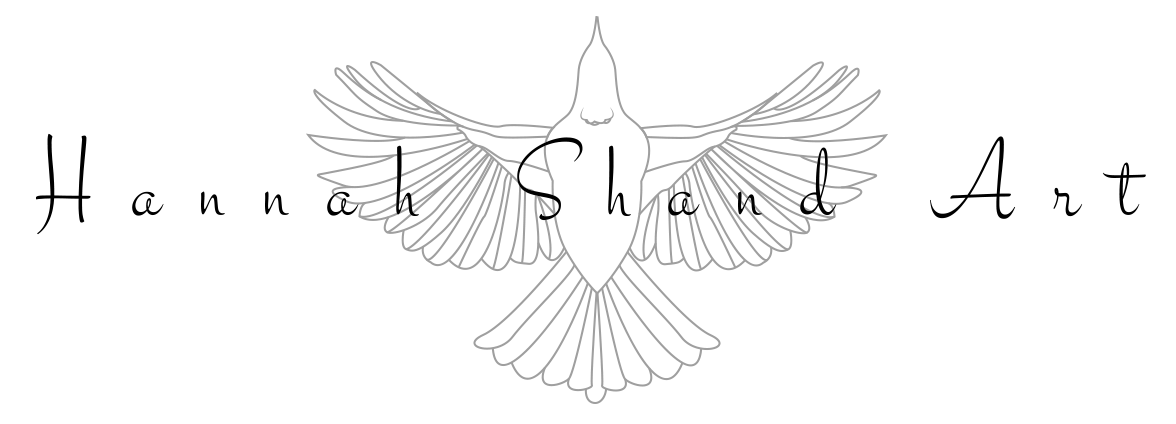Being a professional artist, I often get asked how I made this my career, so I thought I would put a blog post series together to share some of the things I’ve learnt so far in my journey, and some advice for other artists wanting to make this transition. My hope is that it can help other artists, give them the confidence to also make their passion their career, and have the best chance of success. What started for me as a hobby of drawing birds and animals on my daily train commute to my retail job, has developed into a full time art business that’s taken me on adventures all over the entire length of NZ (and right down to the subantarctic islands!). It’s a lot of hard work (and a lot of admin!), but I love it, and I’m now selling my work online, working with many amazing galleries and stockists, I’ve partaken in many exhibitions, and I’m able to use my art to fundraise for conservation.
There are many aspects to being a full-time artist, so I am just going to delve into a few of the key things to know, such as the business side of things, learning resources, and some other factors like working with galleries and sharing your work online. This blog series won’t cover how to create good artwork – it is solely focusing on the many ‘business’ aspects of turning your art hobby into an art career.
It can be a leap of faith turning your art into your main source of income, but hopefully some of these tips will help give you a good insight into becoming a professional artist. Please bear in mind that this advice is just what has worked for me, so I encourage you to adapt it to your circumstances and create your own unique path. There’s no ‘one’ right way to do it!
Ok, let’s dive into it…
First steps - Start today!
Don’t wait for things to be perfect to start – this could be the perfect artwork, photo of your art, social media caption, etc. It’s incredibly easy to stall anything if you don’t think it’s perfect, and I’ve certainly done this myself! I promise that the sooner you begin, the sooner you can get feedback, refine and improve. Remember: you can always edit or delete things later, and imperfect art/content/etc is better than nothing. Six years into my professional art career now, I’m still always looking for ways to improve my art, my packaging, social media posts, website, customer experience, gallery network, and more.
Create as much as you can – try different mediums, different styles, subject matter, and find what you’re passionate about creating. In the early days you’ll be putting in a lot of time and not making much money, and it’s far easier to put more time and effort in if you love what you’re creating. If taking inspiration from others though, please be sure you’re not copying them, or working from other’s artworks or photographs (without written prior permission).
If you want to be a professional artist, it’s a good idea to write a business plan. From this you’ll clearly define things like:
What is your purpose?
Who is your target market?
What is your point of difference?
What is your story/message/artistic-vision, and how will you tell it?
What are your short, medium and long term goals as an artist?
What are you going to sell, how many per year, and for how much?
What are your sales channels?
What is your marketing strategy?
What are your overhead expenses?
What are your costs to produce your art?
What are your equipment costs? (easel, desk, laptop, phone, etc)
Look online for business plan templates for creatives, to see what else to consider and plan out. Although this seem might not seem necessary for an artist, it will give you clarity around all the aspects which you’ll need to figure out to make your art career/business succeed.
Quick tip - Start up a business bank account on day one. Making all art purchases and sales through a separate account will make your accounting way easier. Keep your personal expenses separate from your art expenses (ask an accountant or check the IRD website for what are allowable business expenses).
Once I started writing this blog post I realised how much I wanted to share, so I have decided to make this a series of blogs, instead of one super long one. I’ll be covering lots of other topics like transitioning into your art career, finding support and feedback, learning resources and working with galleries. Click here to read the next post about the initial steps to selling your artwork.
I really hope that you’ve gained something from this blog and I would love it if you’d leave me a comment and let me know what you think or if you have any questions :)
For other blogs in this series…
How to become a full-time artist | Part two | Start selling your art
How to become a full-time artist | Part three | Transition into your art career
How to become a full-time artist | Part four | How to work with galleries
